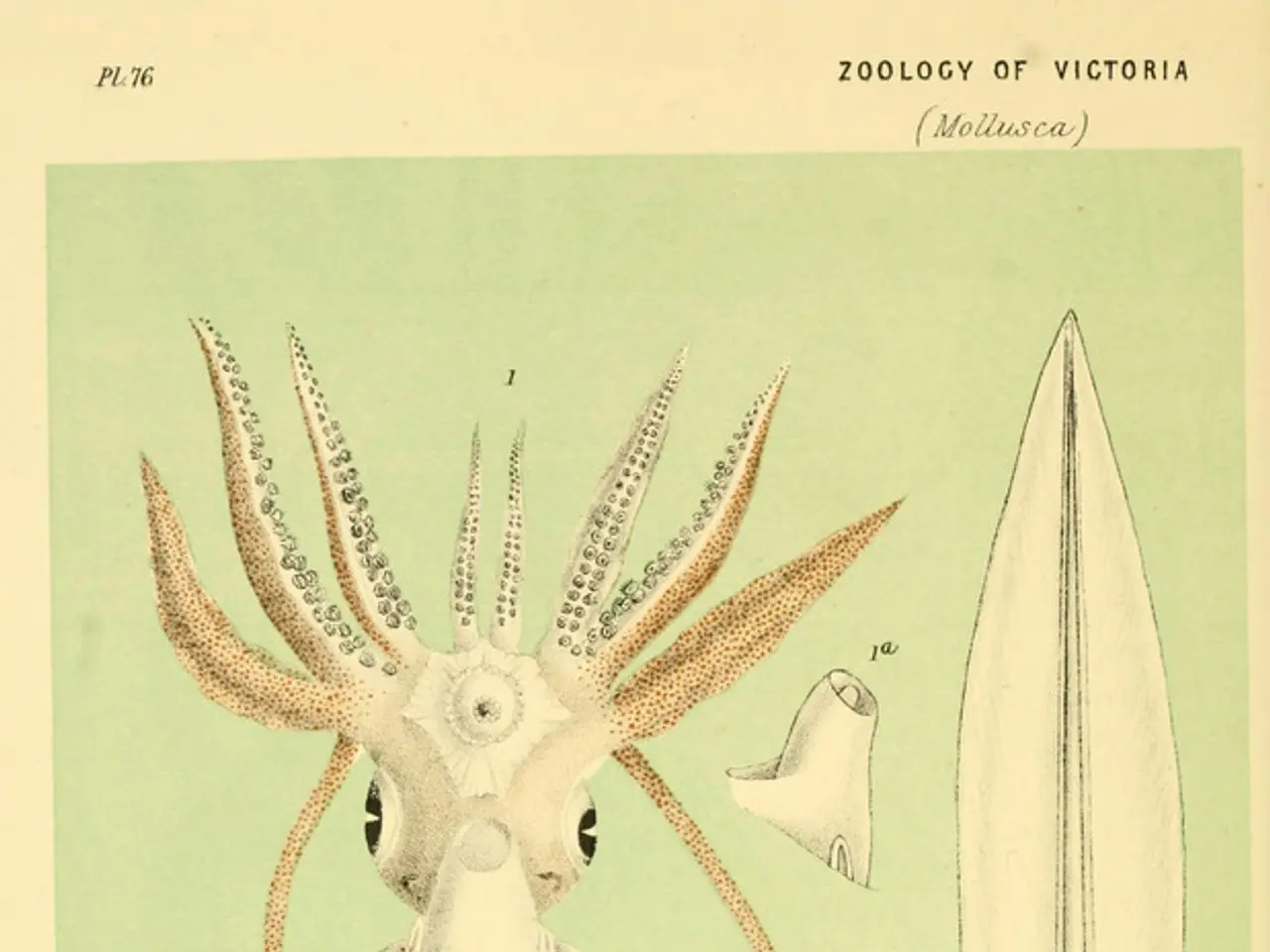Humanity's imminent progress into the realm of quantum science signifies a significant advancement that could have far-reaching implications for planet Earth.
In the world of quantum physics, a fascinating phenomenon known as quantum entanglement is making waves. This enigmatic property, which seems to defy conventional notions of space and time, is paving the way for a future where secure communication and data encryption reach unprecedented levels.
Quantum entanglement, a phenomenon where particles can appear to influence one another instantaneously, regardless of distance, is a core enabler for the development of the quantum internet and secure data encryption. By linking qubits across distant locations, the states of entangled particles become instantly correlated, creating ultra-secure communication channels. Any attempt to intercept these entangled particles would immediately reveal the presence of eavesdropping, ensuring tamper-proof data exchange.
In the context of the quantum internet, pairs of entangled photons are distributed between communication endpoints to establish these secure links. This interconnectedness, facilitated by entanglement, enables secure key distribution and synchronization critical for quantum networks. The quantum internet leverages qubits' superposition and entanglement to surpass classical internet limitations, offering not only secure communication but also distributed quantum computing networks.
Quantum entanglement is also fundamental to quantum key distribution (QKD), a method of encryption that provides theoretically unbreakable security. Unlike classical cryptography that depends on computational difficulty, quantum encryption exploits entanglement to detect any interception attempts, guaranteeing long-term security even against future quantum computers. This paradigm shift protects sensitive data by using encryption methods that classical or quantum adversaries cannot feasibly break.
Despite practical challenges, such as stabilizing qubits over long distances and the current distance limitations of entanglement-based communication, advances in hardware to preserve entangled photons and network them efficiently are being developed to overcome these issues. The goal is to scale quantum internet infrastructure and secure data encryption further.
Beyond the quantum internet, quantum entanglement has potential applications in various fields. Quantum sensors, for instance, exploit quantum effects to attain far greater accuracy than classical devices can provide. Quantum refrigerators use the principles of quantum thermodynamics to cool down systems, and quantum batteries store energy in the quantum states of atoms.
However, the journey to harnessing the full potential of quantum entanglement is far from over. Challenges such as sustaining entangled states among hundreds or thousands of qubits and finding a quantum theory of gravity remain. Yet, the promise of a future where quantum entanglement enables revolutionary advancements in technology keeps physicists and engineers pushing forward.
In summary, quantum entanglement enables the quantum internet by creating instantly correlated qubits over distance, securing communication channels against eavesdropping, and underpinning quantum encryption methods that promise unbreakable, future-proof data security. As research continues, we can expect to see more breakthroughs in this fascinating field.
[1] Nielsen, M. A., & Chuang, I. L. (2000). Quantum Computation and Quantum Information. Cambridge University Press. [2] Ekert, A. (1991). Quantum cryptography: practical implementation of BB84. Physics World, 4(5), 36-41. [3] Kim, E., & Kwiat, P. G. (2008). Quantum repeater. Nature Photonics, 2(8), 438-447. [4] Sangouard, P., Tittel, W., & O'Brien, J. (2011). Quantum repeater protocols. Reviews of Modern Physics, 83(3), 1013-1084.
- The quantum internet, powered by quantum entanglement, promises to revolutionize secure communication and data encryption, reaching levels previously unseen.
- In this future, pairs of entangled photons link communication endpoints, establishing secure channels for transferring data.
- Such interconnectedness, facilitated by entanglement, enables secure key distribution and synchronization essential for quantum networks.
- The quantum internet aims to surpass classical internet limitations, offering not only secure communication but also distributed quantum computing networks.
- Quantum entanglement is also vital for quantum key distribution (QKD), a method of encryption providing theoretically unbreakable security.
- Unlike classical cryptography, quantum encryption detects any interception attempts, ensuring long-term security against both classical and quantum adversaries.
- Advances in hardware to preserve entangled photons and network them efficiently are being developed to scale quantum internet infrastructure and secure data encryption further.
- Beyond the quantum internet, quantum entanglement has potential applications in various fields, including quantum sensors, quantum refrigerators, and quantum batteries.
- As research continues, artificial intelligence, data-and-cloud-computing, and even environmental-science may be transformed by the intricate nature of quantum entanglement.
- Cybersecurity, gadgets, medicine, engineering, and physics will evolve alongside quantum entanglement, as scientists and engineers continue to push the boundaries of this fascinating phenomenon.
- The journey to harnessing the full potential of quantum entanglement is ongoing, with challenges such as sustaining entangled states among large numbers of qubits and finding a quantum theory of gravity remaining to be explored.




